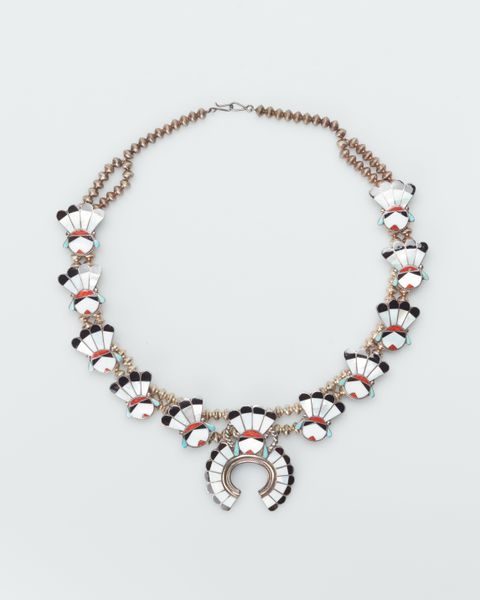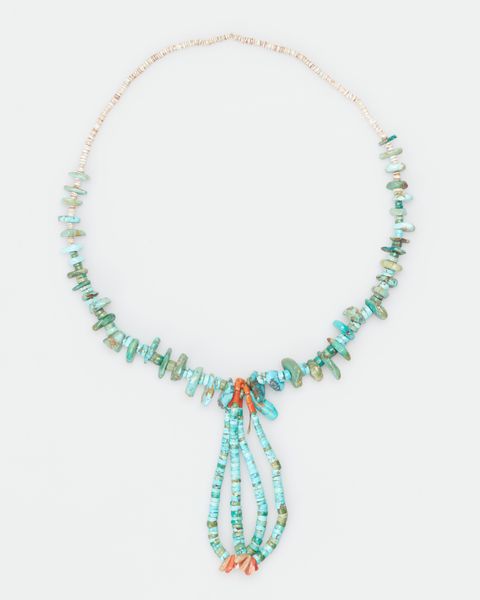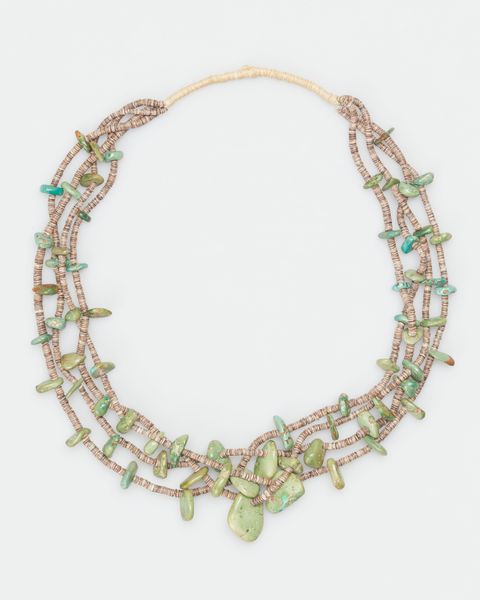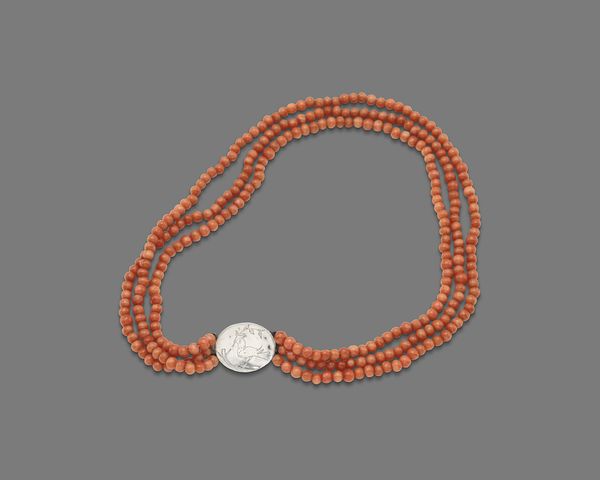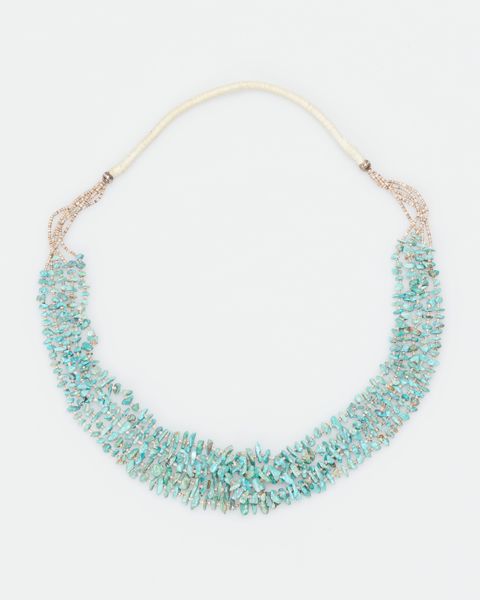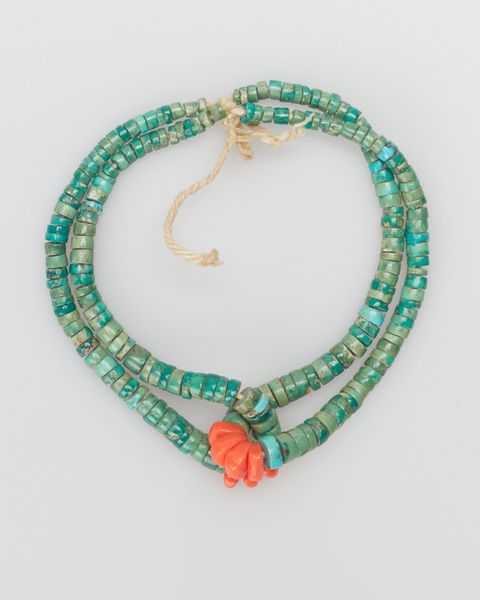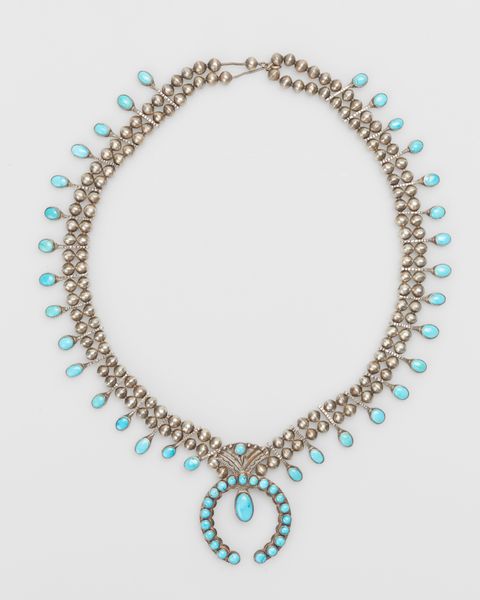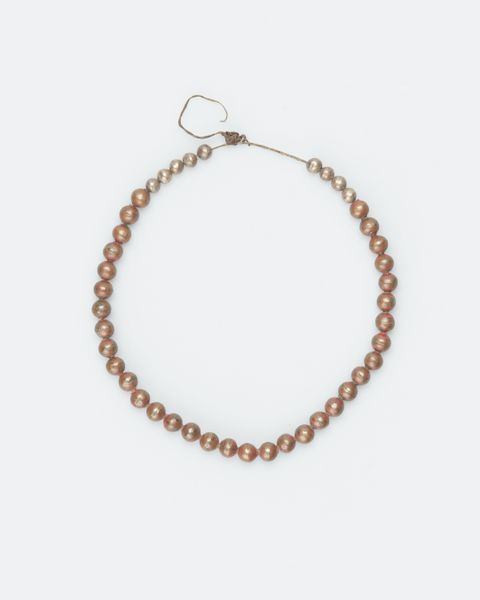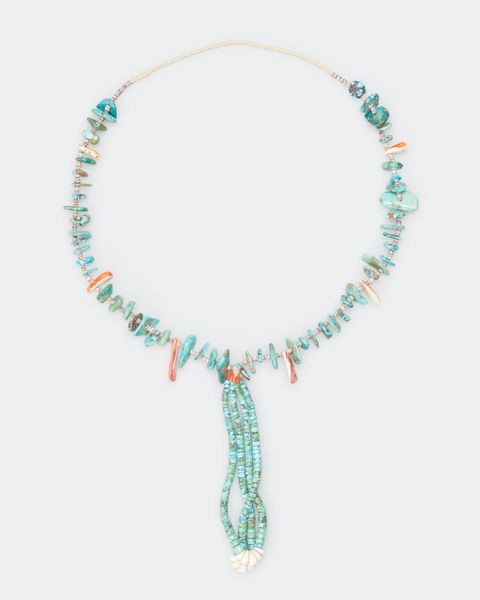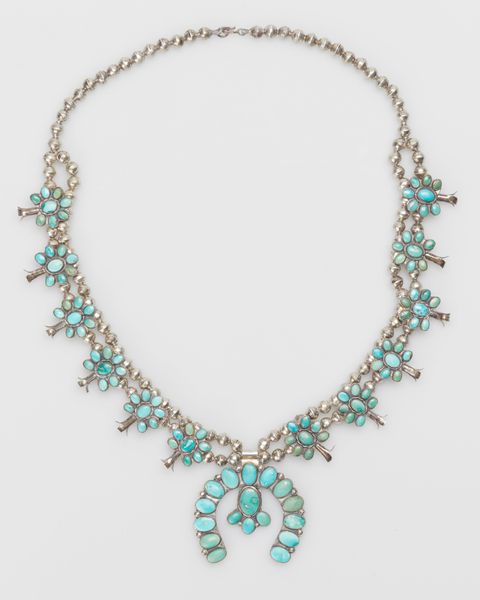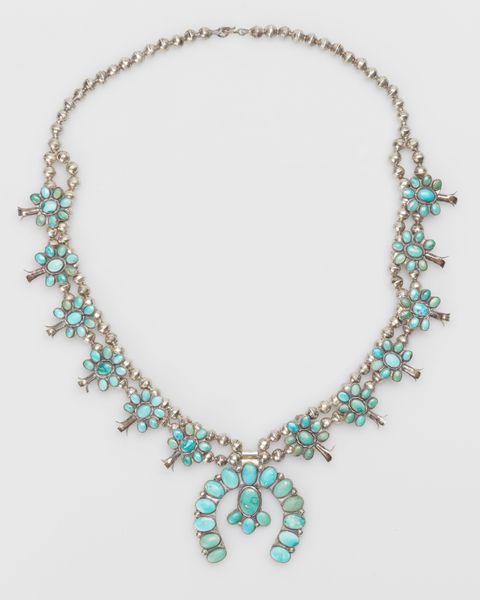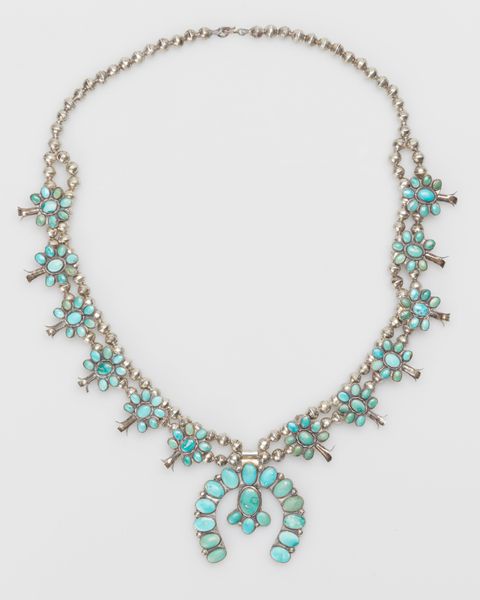
carving, metal, gold, sculpture
#
organic
#
carving
#
metal
#
gold
#
form
#
folk-art
#
sculpture
#
romanticism
#
france
#
decorative-art
#
erotic-art
Dimensions: 8 x 7 x 2 1/2 in. (20.32 x 17.78 x 6.35 cm)
Copyright: Public Domain
Curator: We’re looking at a coral necklace, dating back to the 19th century. It’s currently held in the collection of the Minneapolis Institute of Art. Editor: It has such a delicate, almost frothy quality. The intense orange-pink of the coral set against that dark backdrop makes me think of blooming sea anemones clinging to a rock. Curator: Yes, it is evocative. This piece combines carved coral beads with what appears to be a gold setting. You’ll notice the intricate detail in the coral itself, especially the floral elements that form the focal point of the necklace. The use of coral suggests organicism but its symmetrical arrangement hints at formalism. Editor: I wonder about its cultural origins. Given its decorative qualities, was it made for the French market, as part of some grand display of wealth and social status during the height of Romanticism? And what does it mean to wear coral – to carry that history with you? Was it intended to have some symbolic weight? Curator: Coral throughout history has certainly been attributed with many qualities from warding off evil spirits to providing safe passage over water. We can examine the form: see the beads. How are they arranged? What sort of pattern do they follow? This sort of formal examination reveals more about the construction and deliberate intention of the artist. Editor: But how much can be separated from a broader understanding of colonialism and ecological damage? The extraction of coral—a living organism—for adornment has an undeniable social cost. We have to think critically about what it means to wear something with such implications, the environmental cost involved, or even question its historical source and implications. Curator: That’s certainly one avenue of thought. The necklace's visual appeal lies, for me, in its construction: the interplay between the smoothness of the beads and the complexity of the carved floral elements, all working together. The craftsmanship is, quite simply, superb. Editor: Agreed, there's incredible artistry. And while the formal elements are undeniable, recognizing its historical context brings the piece to life, giving it added significance for a contemporary audience, while reflecting upon its troubling extraction process. Curator: Indeed. Whether viewed through a formalist lens or a socio-historical one, the necklace presents a fascinating intersection of artistry, materiality, and history. Editor: Ultimately, these conversations enrich our understanding, prompting us to look deeper at the necklace and beyond.
Comments
No comments
Be the first to comment and join the conversation on the ultimate creative platform.
